Well, a very long time is not a major source of water supply in the private sector, country cooperatives and rural areas. Despite this, the owners of the wells are in no hurry to fall asleep. Wells continue to bring tangible benefits and save a lot of money even in the presence of a modern pipeline. In the summer, water goes to watering the garden, and the summer houses are enjoyed by the gifts of nature. But that the well serve for a long time and flawlessly, you need to be able to care for him. Timely cleaning of wells is one of the most important operational points, and in this article we will talk about the features of this procedure.
Signs and Causes
Before proceeding to the cleaning of the wells with their own hands, it is necessary to understand the root cause, namely, in the source of pollution. Otherwise, you will encounter each time one and the same problem until you eliminate the cause of the cloud.
How can you understand that the well needs cleaning? First, pay attention to the color and transparency of water. In different regions, it may differ, but if the water "bloomed," it became muddy, it means it's time to proceed to cleaning. Secondly, skip the water - if it does not smell freshness, as she is supposed, but gives a shaggy, the decision is obvious.
There are several types of well pollution:
- Muddy water - the reason is the depressurization of the seams between the rings of the well, which is why the ridder penetrates with small particles of the Earth and clay. Gradually, the sails accumulate at the bottom, stopping the work of the bottom filter. An alternative reason is a poor-quality bottom filter.
- The presence of large garbage is the reason lies in the unreliable protection of the well from penetration from above. So, in the fall, the leaves can attack him, during a strong wind will drive garbage from the street, stray animals or birds may fall.
- Water darkening is the reason in the rare well-use well. Water simply stood and gradually spoils. It is beginning to multiply bacteria. In this case, it is worth thinking about the liquidation of the well or use it more often, at least for prevention.
- Green water - "bloom" speaks of the presence of microscopic algae in water. The reason is the open mine of the well through which sunlight penetrates. If you do not take action, such a well will turn into a swamp very quickly.
- "Rusty" water - the reddish color of the water says that there is too much iron in it. The reason lies in the poor quality of the aquifer, and the cleaning of the well will not eliminate this problem. You must install a high-quality filtering system or put home filters.
- The sewer smell and unpleasant taste appear in the case of depressurization of the well mine. However, the same signs may indicate the presence of an animal in the corpse mine.
Types of cleaning
There are several varieties of cleaning wells depending on the degree and nature of pollution.
Preventive cleaning of the well
The cleaning of the well for the prevention should be carried out once a year in obligatory. Even if it seems to you that everything is in order with water, it needs to be searched for insurance. To do this, you need to purchase ordinary manganese, dissolve it in water and pour into the mine. Of course, it is almost impossible to find clean manganese today, so use the potassium permanganate solution, which can be bought at the pharmacy. It is enough 1-2 tablespoons for a retention. After 2-3 hours, roll out all the water. If you have a vegetable garden or garden, use water for watering plant (mangalls will not harm them, on the contrary, you are disinfected by the soil).
Video about cleaning wells will help you solve this problem easily and quickly.
https://www.youtube.com/watch?feature\u003dplayer_embedded&v\u003ds-dzxfmtaum
Removal of dirt and sand from the bottom
The cleaning of the well drain pump is relevant if a turbid sediment appeared on the day, the bottom filter appeared, but the quality and taste of water correspond to the norm.
The cleaning of the well is carried out in several stages:
- Prepare an ordinary water pump (you can buy or borrow from neighbors), as well as a drainage pump for pumping dirty water.
- Water pump will torment the water. Lower it on the bottom, fixing the short hose so that the pump creates the most intense water drilling and raised the dirt as much as possible from the bottom.
- Suspend the drainage pump on the cable in such a way that it does not reach the bottom of the centimeters to 30. The second end of the hose directed to the other side where the dirty water (under a tree or in a bed, for example), will be merged.
- Turn on the first water pump first, and after 5 minutes - drainage.
- Control the duration of the procedure according to the state of the pumping water. As a rule, to remove the 10-tisantimeter layer of sand and dirt, enough 2 hours of operation. For this reason, it is necessary to choose a rather powerful pump for cleaning the well so that it can be smooth to work smoothly for several hours. Otherwise, the filter on the bottom will be scored again.
If, after such a cleaning, the sand scores a bottom filter again and manifests itself in water, it is necessary to carry out "general cleaning", that is, completely cleaned the well.
"General cleaning": cleaning and repair of the Mine of the Well
Sooner or later, each owner of the well faces the need for its overhaul and repair. The reason for this can serve as algae, depressurization of the mines and other unpleasant factors described above. Get ready for what you have to pump all the water and literally to immerse yourself in the work.
To complete the cleaning and repair of the well, you will need the following tools:
- water pump;
- insurance cables or climbing equipment;
- long staircase or rope swing;
- high rubber boots;
- bucket;
- soft brush for metal;
- shovel;
- construction helmet;
- liquid glass with 1: 1 cement (for lubing cracks in the mine);
- chloric
- respirator;
- brush;
- gloves.
It is strongly recommended to carry out such cleaning alone, so call a couple of friends: one will go down to the mine, the other is to raise buckets with sand and mud, and the third is to control insurance.
Prepare the necessary equipment, you can proceed to cleaning:
- Immerse the pump on the bottom of the well, run and wait for the water from the first rings of the mine. When this happens, you can proceed to the mechanical cleaning of the walls from mucus and algae.
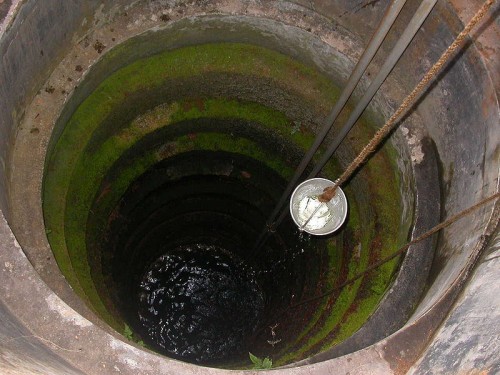
- Securely fix the cables or climbing equipment and start cleaning the walls of the first mine ring with a moderately rigid metal brush. Such a brush effectively removes Sorrow and does not destroy the concrete.
- If you notice cracks in the process of cleaning, it is better to immediately shock them with a mixture of liquid glass and cement. It is convenient to do this with the help of a conventional spatula.
- When you get to the bottom, collect a shovel of dirt, Il and sand in the bucket and lift them up, tied by the handle to the cable. During work at the bottom of the well, it is recommended to put on a construction hard hat that the lacquer sustained the bucket did not cause severe injury.
- Rinse the material laid as a filter or replace it new if it collapsed.
- After removing mucus and dirt from the walls, it is necessary to get rid of microscopic parasites infecting water. To do this, disinfect the walls by chlorine - to divert the chlorine in the water 1: 1 and apply with a thick brush to the walls, missing every corner. Pour the remnants of the solution to the bottom, and the mine close the polyethylene film so that the chlorine does not destroy. The same procedure can be performed using a mangartage, but the effect will be weaker. Chlorine will provide complete disinfection, which is especially relevant when cleaning sewer wells. Within two days it is necessary to pump water 2-3 times to wash off the chlorine, but the specific smell of "freshness" will be present for about a month, so it is temporarily better not to use this water for drinking and cooking.
Useful advice: To disinfect water, drop on the bottom of the grid with silicon. The lattice should be changed twice a year.
It will greatly facilitate the task of raising the layer of sand and dirt from the bottom of the grab to clean the wells. This is a special bucket that captures the dirt from the bottom and rises to the top of the winch. More information about how this device works can be found in the video material below:
If you comply with all security measures and acquire at least one assistant, the cleaning of the well will turn into a pleasant occupation and does not take much time.

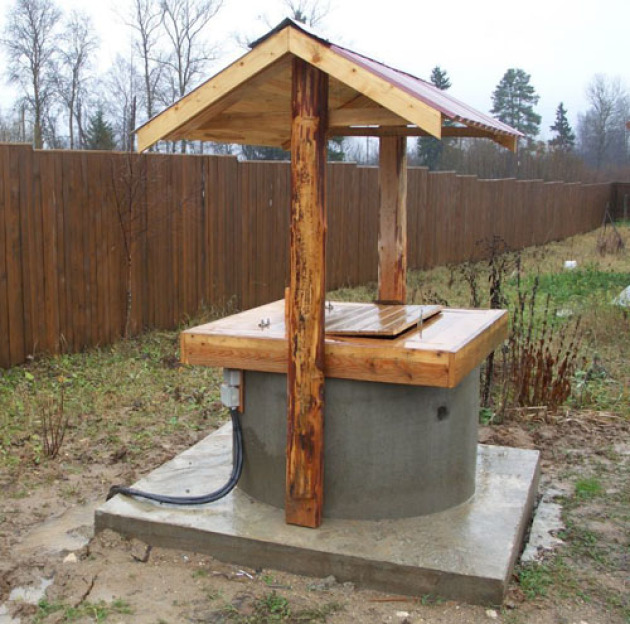
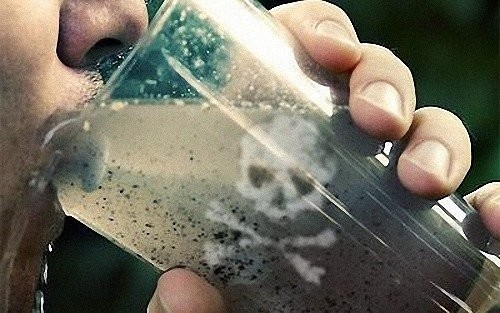
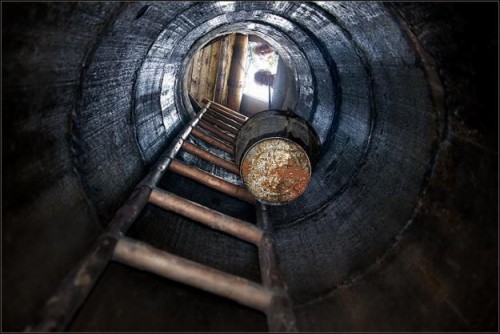
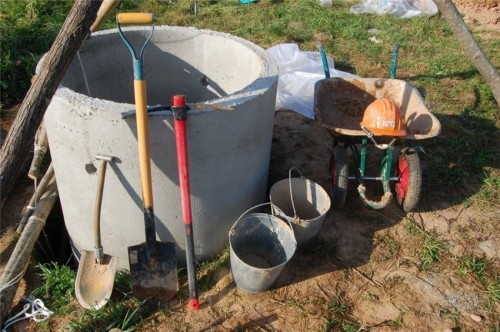












 Start a discussion ...
Start a discussion ...